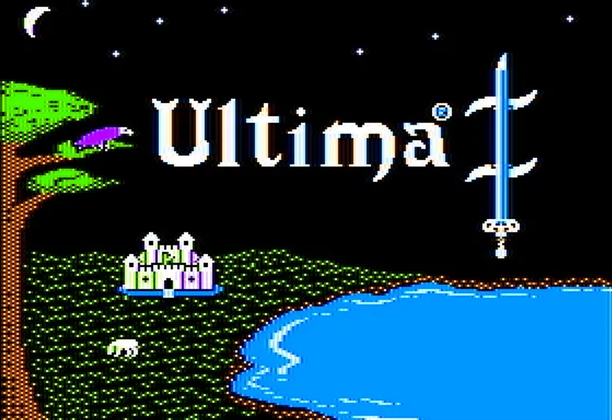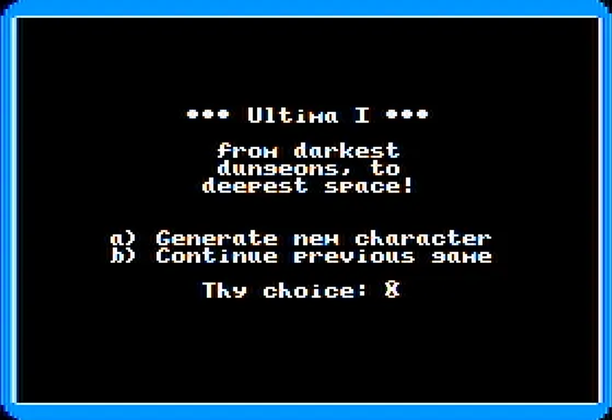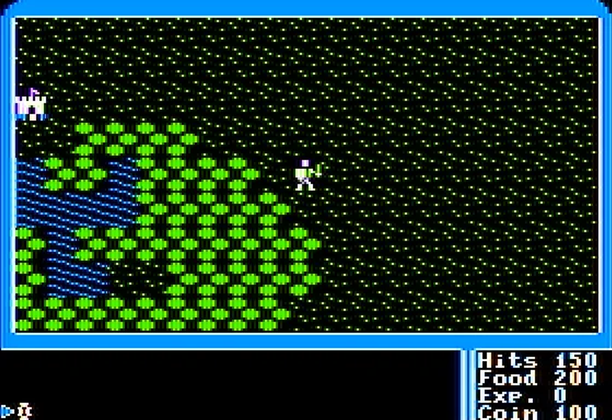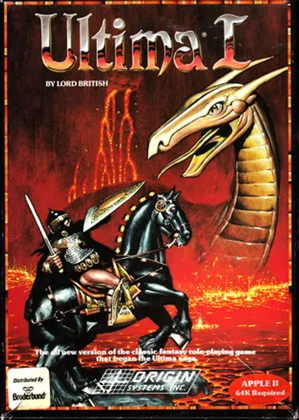As a seasoned gamer with a profound love for RPGs like “Final Fantasy” and “Persona,” revisiting “Ultima I” is a trip down memory lane. However, I’d advise against playing it solely out of nostalgia or for a collection. While pioneering in its time, its age is evident, making gameplay more of a chore than a joy. Newcomers should start with “Ultima IV,” where the series truly shines with meaningful character development and a richer story. But let’s delve into what “Ultima I” offers for the curious or dedicated.
Simple Yet Ambitious Gameplay
“Ultima I” provides a straightforward yet ambitious gameplay experience. Players navigate a top-down overworld on a tile-based map, which shifts to a pseudo-3D first-person perspective in dungeons. The mechanics are rudimentary by today’s standards but were revolutionary at the time. Engage in turn-based combat, level up, and gather equipment and treasures. Surprisingly, the game also features space exploration with 3D wireframe flight sequences, adding a unique twist. However, the mechanics can feel repetitive and cumbersome compared to modern games.

Visual Presentation
The visuals in “Ultima I” remind us of early ’80s gaming. The tile-based overworld has simplistic colors and designs that are quaint but far from today’s graphical expectations. Dungeon graphics, though innovative in pseudo-3D, are rudimentary and challenging to navigate. Updated graphics in the remake add some polish but remain a minor upgrade from the original’s blockiness.
Thin Storyline
The story of “Ultima I” centers on saving Sosaria from the evil wizard Mondain. This narrative foundation is thin by today’s standards, lacking depth and character-driven plots. Unlike later series entries, which explore themes of virtue and morality, “Ultima I” offers a basic ‘good vs. evil’ premise, serving mainly as a gameplay backdrop. There’s little in the way of twists, turns, or emotional engagement.

Minimal Character Development
Character development in “Ultima I” is minimal. Players create a character based on standard RPG attributes like strength, agility, and intelligence. NPCs serve functional roles, like shopkeepers or quest givers, and the player’s character grows in power without a narrative arc. Those seeking rich, multi-dimensional characters will find this entry lacking.
A Bittersweet Journey
Revisiting “Ultima I” is bittersweet. It’s easy to appreciate its pioneering steps in the RPG genre, but playing through it today can be a slog. The charm lies in its historical significance and ambitious design choices by Richard Garriott in 1981. Memorable moments include achieving space flight and conquering Mondain. However, the game’s repetitive and tedious nature cannot be ignored.

Recommendations
RPG enthusiasts or retro gaming historians will find value in “Ultima I” for its historical context. For casual players or those new to Ultima, starting with “Ultima IV” offers a more fulfilling experience. “Ultima I” suits those with a penchant for gaming history and tolerance for archaic design. Beginners should grind in safer areas to build a sturdy character before tackling tougher enemies and dungeons. Efficiently managing resources and preparing well before space flights can save setbacks.


